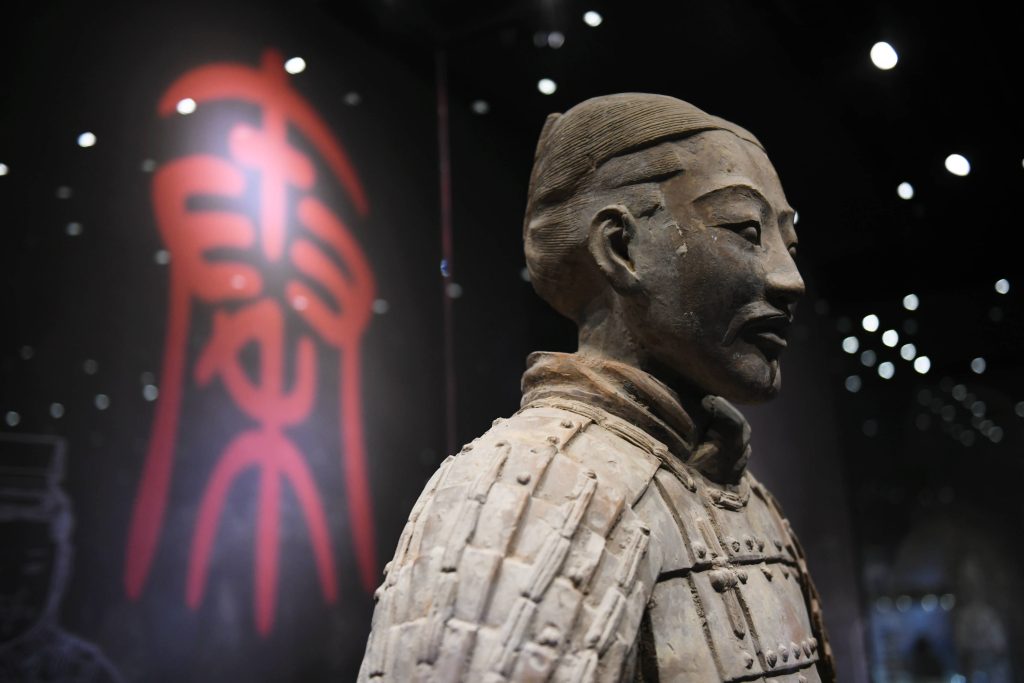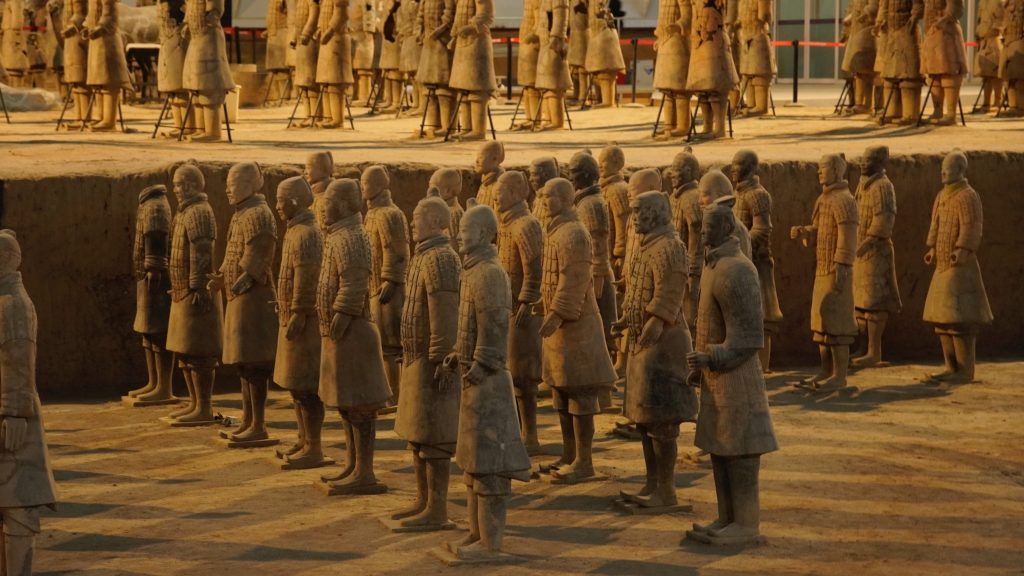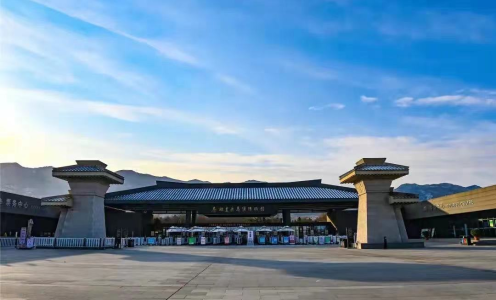One of the most amazing archaeological finds from mankind, the Terracotta Warriors are an underground army of more than 8,000 life-sized clay soldiers each with distinct facial traits and details formed more than 2,200 years ago to protect Emperor Qin Shi Huang in the next world. Found in 1974 by Chinese Shaanxi Province farmers excavating a well close to Xi’an, these silent sentinels have captivated the world’s imagination and attracted millions of visitors to admire their workmanship.
Though the warriors themselves have been much examined, photographed, and recorded, far less has been paid to the people who actually produced them. These master artists and engineers could create such a remarkable artistic and technical accomplishment. How did they lead their lives? How were they directed, trained, and arranged? And following their enormous effort, what happened to them?
Knowing the craftspeople behind the Terracotta Warriors is not only a hobby in historical inquiry. It offers vital new perspectives on ancient Chinese society, technological capacity, artistic traditions, and labor organization during the Qin Dynasty—a turning point that saw China united for the first time. Their narrative marks a significant chapter in human creativity and accomplishment deserving of study and celebration.
Ancient Texts and Historic Records 📜
Logically, the hunt for knowledge on the creators of the Terracotta Warriors starts with old Chinese historical records. But this strategy creates serious difficulties right away. Though significant in Chinese history, the Qin Dynasty (221–206 BCE) was rather brief and many records were lost or destroyed during later political upheavals, especially the burning of books prescribed by Emperor Qin personally and later wars during the Han Dynasty.
Researchers looking for more particular details must consult administrative records and books on Qin period craftsmanship. Slips made of bamboo and wood found at places like Shuihudi and Liye contain government records that clarify the organization, hiring, and management of artists during this age. These documents expose a highly bureaucratic system in which qualified workers were frequently conscripted for government projects, arranged into specialized workshops, and under close quality control scrutiny.

Though it doesn’t particularly reference the Terracotta Warriors project, the “Artificialers’ Record” (Kaogong Ji), a part of the “Rites of Zhou” assembled during the early Han Dynasty, offers thorough information about many crafts and manufacturing standards. Still, it provides insightful background on the technical expertise, specialization, and organizational ideas that would have controlled such an ambitious project.
Scholars of ancient Chinese literature also study poetry and prose from the era for oblique allusions to major artistic initiatives and the life of craftspeople. Although these sources hardly specifically refer to the Terracotta Warriors (unexpected given the secrecy around the emperor’s tomb), they help to depict how artists were perceived in society and the circumstances under which they usually worked.
The lack of direct textual evidence regarding the creators of the warriors emphasizes the need of combining literary study with archaeological results. Combining these methods will help scientists start to create a more whole, if still fragmentary, knowledge of who these artists were and how they achieved their amazing feat.
Inscriptions and Archaeological Findings 🏺
Archaeology has supplied the most direct proof regarding the artists who produced the Terracotta Warriors where historical records fall short. The inscriptions discovered on many of the terracotta figures themselves point to maybe the most important revelations. Usually stamped or engraved before firing, these marks include names, numbers, and symbols that have been quite helpful for comprehending the workshop organization and production process.
There have been found over one hundred distinct inscriptions, many bearing the names or identifying marks of particular craftsmen or workshop supervisors. For instance, “Xian” (咸) and “Gong Sui” (工遂) are thought to be the names or marks of master craftsmen supervising the fabrication of specific figures. These inscriptions were probably used for quality control so that managers could find out which workshop or person handled every item.
Archaeologists have deduced from the way these marks are distributed that production was arranged into separate workshops, each in charge of particular stages of the manufacturing process or component. While some workshops concentrated on arms, legs, or finishing details, others were focused in building heads, bodies, or tools. One of the first known instances of mass, standardized manufacturing in history is this assembly-line approach.
The remains of several workshop sites have been unearthed by excavations around the mausoleum complex, so offering physical proof of where and how the warriors were produced. These seminars included waste materials, tools, kilns, molds, and direct insights on manufacturing techniques. According to study of these sites, the artists set up production facilities close to the burial site with specialized areas for several phases of the process instead of moving the heavy clay figures great distances.
Finding incomplete figures and production rejects has been especially helpful since these works expose the methodical process followed to produce the warriors. According to archaeologists, heads were individually sculpted to produce distinctive faces while the basic bodies were created using molds for standardized parts. The figures were built from clay coils and slabs, then polished with hand tools before firing in big kilns capable of temperatures above 1000°C.
At least eight distinct kinds of specialized tools used in the warriors’ creation have been found thanks to tool marks seen on them: different spatulas, knives, and smoothing tools. Microscopic study of these marks offers understanding of the particular methods and degree of expertise the craftmen possess.
The fingerprints sometimes discovered preserved in the clay are maybe most intriguing. Over two millennia, these direct physical imprints left by the artists themselves establish a real link. While most were adult men, forensic analysis of these fingerprints has even let researchers estimate the age and sex of some workers, implying that some younger apprentices and maybe women may have been involved in some facets of production.
Analysis of the living circumstances of the artists has also been a recent emphasis of archaeological efforts. Remains of housing compounds close to the workshop locations show that many workers resided on-site over the years-long project. Examining food, personal objects, and daily life evidence helps paint a more whole picture of who these artists were and how they lived while building the emperor’s terracotta guardians.
Tours the Terracotta Army Site 🗺️

Nothing compares to seeing the real excavation site close to Xi’an, China, for those really curious in learning the craftspeople behind the Terracotta Warriors. Comprising the well-known pits housing the warriors, the Mausoleum Site Museum of Emperor Qin Shihuang presents an unmatched chance to personally admire the scope and workmanship of this ancient accomplishment.
There are a number of main sections to the museum complex. Thousands of warriors in different states of restoration occupy the three main excavation pits, which let guests view both the painstakingly ongoing archeological work and fully rebuilt figures. This continuous excavation offers a special chance to see archaeology in action and learn how scientists keep finding fresh details on the craftspeople and their techniques.
- Pit 1: With almost 14,000 square meters, Pit 1 is the largest excavation area and houses the main army formation including about 6,000 soldiers. Visitors can see here the range of poses, armor styles, and facial features that highlight the artistic ability and attention to detail of the craftspeople. The sight of row upon row of life-sized figures, each unique, overwhelms one with the enormous effort and organization needed to produce them.
- Pit 2: Pit 2 contains what archaeologists consider to be elite forces—cavalry, chariots, and archers in specialized formations. The several military units shown here highlight the artists’ knowledge of modern military organization and their capacity to faithfully portray many kinds of soldiers and equipment.
- Pit 3: The smallest of the main excavations, Pit 3 has what looks to be a command center including senior officials. More complex uniforms and headgear for these leaders show how skillful the artists are in separating rank and status from minute changes in posture and dress.
Apart from the main pits, the site comprises exhibition halls especially aimed at the production process and the archeological findings exposing details on the craftsmanship and the discoveries. These displays show production tools, molds, and unfinished figures that show the methodical process used to create the warriors. From first clay preparation to final painting, interactive displays and video presentations help to clarify the methods used by the ancient craftsmen.
Additionally housed on the site museum is a research center where guests may learn about continuous archeological activity and conservation initiatives. Special shows usually feature fresh ideas and research results on workshop organization and manufacturing processes.
The museum provides more specialized tours guided by archaeologists or researchers who can provide closer access to the evidence regarding the artists and their work for committed students of the field. These expert-led trips give access to knowledge and viewpoints not possible through regular visits, even if they usually call for advance planning and may include extra costs.
Xi’an’s environs also include other pertinent sites that help one to grasp the world of the artists. Extensive collections of Qin Dynasty relics housed in the Shaanxi History Museum show the larger artistic and technical backdrop against which the Terracotta Warriors were produced. From the next Han Dynasty, the Han Yang Ling Mausoleum presents fascinating analogies that accentuate the special qualities of the Qin artists.
Museums and Exhibition Sites Globally 🏛️
Museums and special exhibitions all around provide chances for learning about the Terracotta Warriors’ creators for those unable to get to China. Selected warriors and relics have been sent abroad since the 1980s, allowing millions to personally view these masterpieces and study their creation.
Important institutions featuring ongoing Terracotta Warrior collections include:
- The British Museum (London) – routinely features several Terracotta Warrior figures in special exhibitions on ancient China and houses many of them. Their digital resources and detailed information panels sometimes center on workshop organization and production methods.
- The National Museum of China (Beijing) – Extensive collections of Qin Dynasty relics housed help to clarify the artistic traditions and technical capacities of the period.
- The Metropolitan Museum of Art (New York) – Although it does not always show actual fighters, its collection of Chinese art includes related relics and regularly hosts special events including loaned warriors with thorough background on their creation.
- The Asian Art Museum (San Francisco) – Renowned for its educational approach to exhibits, the Asian Art Museum regularly features Terracotta Warrior displays accompanied by detailed production techniques information.
- The National Museum of Asian Arts (Paris) – Comparative exhibits help to put the warriors in the larger framework of ancient Chinese workmanship.
Traveling displays of the Terracotta Warriors have become rather popular all around, outside of permanent collections. Usually including not only the completed warriors but also production tools, molds, unfinished pieces, and comprehensive educational materials on the artists and their techniques, these special exhibits usually feature
Recent significant shows have included:
- “Terracotta Warriors: Guardians of Immortality” (2018–2019 – New Zealand, Australia)
- “China’s First Emperor and the Terracotta Warriors” (2018 – Liverpool, UK).
- “Terracotta Warriors of the First Emperor” (2017–2018 – Philadelphia, USA)
- “Terracotta Warriors: Defenders of China’s First Emperor” (2017 – Pacific Science Center, Seattle)
Usually including multimedia presentations, interactive displays, and occasionally live demonstrations of ancient techniques by modern craftspeople trying to replicate the warriors using traditional methods, these shows. Scholarly papers on the production process and fresh research on the craftspeople abound in exhibition catalogues.
With museums like the Mausoleum Site Museum of Emperor Qin Shihuang providing thorough online tours including particular information on the artists and their techniques, virtual exhibitions have also grown ever more sophisticated. Tool marks, fingerprints, and inscriptions revealing hints about the creators are among the digital resources that frequently offer close-up views of elements difficult to see in person.
Scholarly Research and Publications 📚
Academic study offers the closest insights for those looking for the most thorough and current knowledge on the creators of the Terracotta Warriors. From highly specialized archaeological reports to more easily available books meant for general readers interested in ancient Chinese art and technology, scholarly publications span quite specialized fields.
Important scholarly books emphasizing especially the artisans and production methods include:

- “The Terracotta Army of the First Emperor of China” by William Lindesay and Guo Baofu – has thorough chapters on workshop organization and production techniques grounded on archaeological data.
- “The First Emperor: China’s Terracotta Army” edited by Jane Portal – Published in tandem with the British Museum exhibition offers a complete volume including contributions from eminent academics on many facets of the warriors’ production.
- “Emperor Qin’s Terracotta Warriors: The First Emperor’s Legacy and the Craftsmen Who Made Them by Zhang Weixing – Written by a top Chinese archaeologist engaged in the digs offers insider views on what the archeological evidence reveals about the artists.
Academic publications provide the most recent research results on the warriors and their creators for more specialized knowledge. Important publications to check out are:
- Archaeological Science Journal
- Antiquity
- Chinese Archaeology
- Asian Perspectives
- Journal of East Asian Archaeology
Articles on fresh discoveries, scientific material and technique analyses, and changing workshop organization and artisan identity abound in these publications. Although some would need academic access, many university libraries let public guests use their materials right on-site.
Furthermore invaluable information is available from academic conferences and their published proceedings. Held often in Xi’an, the International Conference on the Terracotta Army and First Emperor’s Mausoleum brings together experts from all around to present the most recent discoveries. Published papers from these conferences sometimes include the most recent studies on the craftspeople and their methods.
For those with specific interests, master’s theses and doctorate dissertations often go into great detail on facets of the Terracotta Warrior creation. ProQuest Dissertations & Theses Global’s databases and university repositories provide access to these.
When looking at scholarly sources, especially pay close attention to multidisciplinary studies combining historical texts, materials science, artistic interpretation with archaeological evidence. Usually, this combined approach offers the most whole view of the artists and their surroundings.
Documentaries and Online Resources 🎥
With documentaries and online resources bringing the ancient workshops to life by expert interviews, computer reconstructions, and footage of continuous archaeological work, visual media provides some of the most easily available means of learning about the creators of the Terracotta Warriors.
Notable films emphasizing especially the training of the warriors consist in:
- “The Greatest Tomb on Earth: Secrets of Ancient China” (BBC/PBS) – Based on evidence from the digs shows archaeologists how the warriors were constructed.
- “China’s Terracotta Warriors” (National Geographic) – has thorough sections on workshop organization and manufacturing methods.
- “Secrets of the Dead: China’s Terracotta Warriors” (PBS) – investigates the technological developments underpinning mass production of the warriors.
- “Unmasking the Face of the Terracotta Army” (Discovery Channel) – Emphasizes especially the techniques used to produce the distinctive faces and what they expose about the artists.
- “The Emperor’s Ghost Army” (NOVA/PBS) – Features experimental archaeology whereby contemporary artists try to replicate the warriors using age-old techniques.
These films frequently include interviews with top archaeologists and conservators interacting directly with the warriors, offering insights not easily found in published materials. Many can be found public libraries or via streaming services.
Online resources have exploded recently thanks to virtual tours, interactive websites, and digital archives providing hitherto unheard-of access to knowledge on the warriors and their creators:
- Mausoleum Site Museum of Emperor Qin Shihuang: The official website provides virtual tours, thorough information on current research, and instructional materials especially on the production techniques.
- Google Arts & Culture’s Terracotta Army Collection: Along with professional commentary, offers high-resolution images that let close inspection of tool marks, inscriptions, and other evidence of the artists’ work.
- Khan Academy’s Ancient China Course: has particular modules on the Terracotta Warriors with details on their creation and the archeological proof regarding the artists.
- Archaeology Magazine: The digital archive includes many pieces on fresh findings on the production of the warriors, searchable by theme.
- The British Museum’s Digital Research Repository: Access to thorough research papers and 3D scans of warriors in their collection from lets close inspection of manufacturing details.
With archaeologists and museums publishing fresh discoveries and research results via social media channels, these platforms have also grown to be useful tools. Following official accounts of sites like the Mausoleum Site Museum of Emperor Qin Shihuang, the Shaanxi Provincial Institute of Archaeology, and major museums with Chinese collections, one can regularly get updates on fresh information about the artisans.
Archaeology and ancient history YouTube channels often feature Terracotta Warrior material, often including expert interviews and footage from digs not accessible elsewhere. As discoveries are made, channels including “Archaeology Now,” “Ancient China,” and university archeology department channels routinely post fresh material.
With series like “The Archaeology Podcast Network,” “The China History Podcast,” and “The Ancient Art Podcast” featuring episodes devoted to the Terracotta Warriors and their creators, often including interviews with archaeologists actively researching the subject, podcasts have become yet another great resource.
Comprehending Historic Craftsmanship Methods 🛠️

Developing a better knowledge of the particular techniques the artists used will help one to really value the accomplishment of the Terracotta Warriors. Several theoretical and practical methods can help one acquire this knowledge.
Archaeological data points to a sophisticated manufacturing technique combining standardizing with uniqueness. The general procedure consisted in:
- Clay Preparation: Local loess soil was refined by settling techniques to eliminate impurities, then mixed with sand and other materials to produce a clay body that could resist the strain of firing big figures.
- Modular Construction: Early forms of assembly-line manufacture produced the fighters. Basic body parts—legs, torsos, arms—were created using standard forms; heads were separately sculpted to produce distinctive faces.
- Assembly and Detailing: The molded components were assembled with clay slip as adhesive, then hand added details using specific tools. Under microscopic inspection, tool marks clearly indicate at least eight different kinds of tools were used.
- Firing: The finished figures were fired in huge kilns at temperatures above 1000°C. The figures shown presented major technical difficulties, thus careful temperature control was necessary to avoid cracking.
- Painting: The warriors were covered in lacquer following firing, then painted with mineral colors to produce lifelike, vivid images.
For those who would want to learn these methods more thoroughly, there are several ways to approach:
- Experimental Archaeology Programs: Certain colleges and museums have whereby participants try to replicate sections of the warriors using historic methods. Sometimes the Shaanxi Cultural Heritage Promotion Center hosts these kinds of events for foreign guests.
- Classic Pottery Courses: Although not particularly relevant to the Terracotta Warriors, courses in traditional Chinese pottery techniques offer insightful analysis of the basic skills the ancient artists would have known. Seek out projects emphasizing hand-building techniques instead of wheel-throwing since the warriors were mostly built using hand techniques.
- Technical Publications: Books such as Yuan Zhongyi’s “The Craft of the Terracotta Army” (former museum director) offer thorough technical explanations of the production techniques grounded on archaeological data.
- Scientific Research: Research publications examining the composition of the clay, colors, and firing methods provide rich insights into the technical knowledge carried by the artists. These abound in publications such as “Archaeometry” and “Journal of Archaeological Science.”
- Comparative Studies of Contemporary Pottery: Investigating pottery traditions in rural China that have stayed rather unaltered can help one understand techniques that might be comparable to those applied by the prehistoric artists. Especially important are villages in Shaanxi Province with ongoing ceramic traditions.
Linking with Archaeologists and Professionals 🧑🏫
Perhaps the best approach to learn about the Terracotta Warriors’ creators is direct interaction with professionals studying them. There are several paths to create these links:
- Lectures and Seminars: Universities with strong East Asian studies or archaeology departments often invite professionals in Chinese archaeology to present public talks. These gatherings sometimes feature Q&A sessions whereby particular questions concerning the craftspeople can be answered.
- Archaeological Conferences: Many welcome interested public members even while academic conferences mostly benefit professionals. Periodically hosted in Xi’an, the International Conference on Emperor Qin’s Terracotta Army gathers eminent scholars from all around the world.
- Museum Events: Traveling exhibits of the Terracotta Warriors usually include lectures, gallery talks, and occasionally workshops run by archaeologists or conservators who handle the objects directly when they visit museums.
- Online Webinars and Virtual Events: Increasingly popular since 2020, provide chances to hear from professionals anywhere. Online events including archaeologists who research the Terracotta Warriors are routinely sponsored by institutions including the British Museum, the Smithsonian, and several colleges.
- Archaeological Field Schools: Although public direct participation in excavations at the Terracotta Army site is usually not possible, field schools at other Qin Dynasty sites in China occasionally allow foreign participants. These give important background for knowing the time the warriors were produced.
- Professional Organizations: Groups like the Archaeological Institute of America and the Society for East Asian Archaeology routinely welcome non-professional members and grant access to publications, events, and networking possibilities with professionals.
- Direct Contact: Many archaeologists are ready to answer careful questions from really motivated people. Sometimes valuable information exchanges result from contacting researchers via their institutional email addresses—found in their published works.
When speaking with professionals, approach with particular, well-researched questions rather than broad ones. Usually, showing knowledge of basic facts about the warriors and posing focused questions about the artists will produce more thorough and useful answers.
Discovering the artists who produced the Terracotta Warriors offers an amazing trip through archaeology, history, art, and technology. Although these prehistoric artists left no written records of their experiences, the mix of scientific study, historical background, and archeological data lets us create a startling picture of their success.
We can progressively develop a more whole knowledge of who these artists were and how they achieved their remarkable feat by investigating historical records, analyzing archeological discoveries, visiting pertinent sites and museums, interacting with academic research, using multimedia resources, knowing ancient techniques, connecting with experts, and investigating related artifacts.
What shows up is a picture of highly talented craftspeople working inside a sophisticated organizational system combining standardized production techniques with individual artistic expression to produce one of the most amazing creations of the ancient world. Their legacy resides not only in the well-known fighters who attract millions of tourists annually but also in the continuous research revealing fresh aspects of their life and work.


